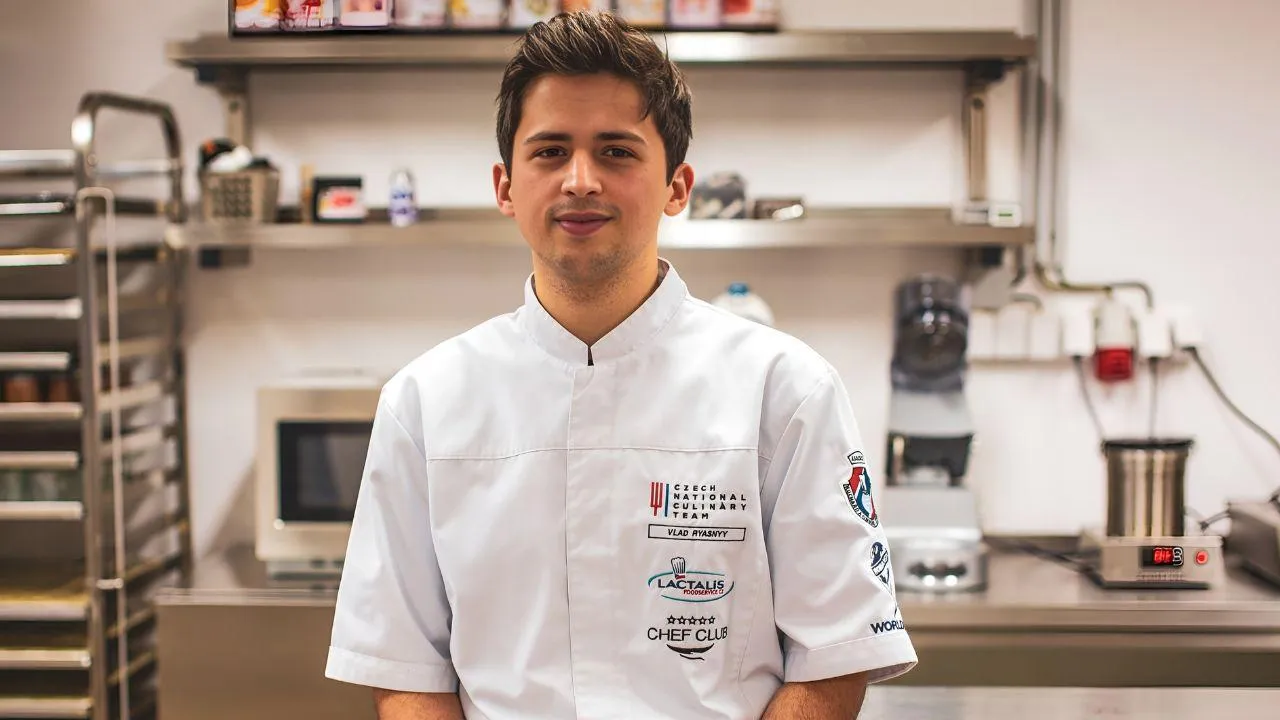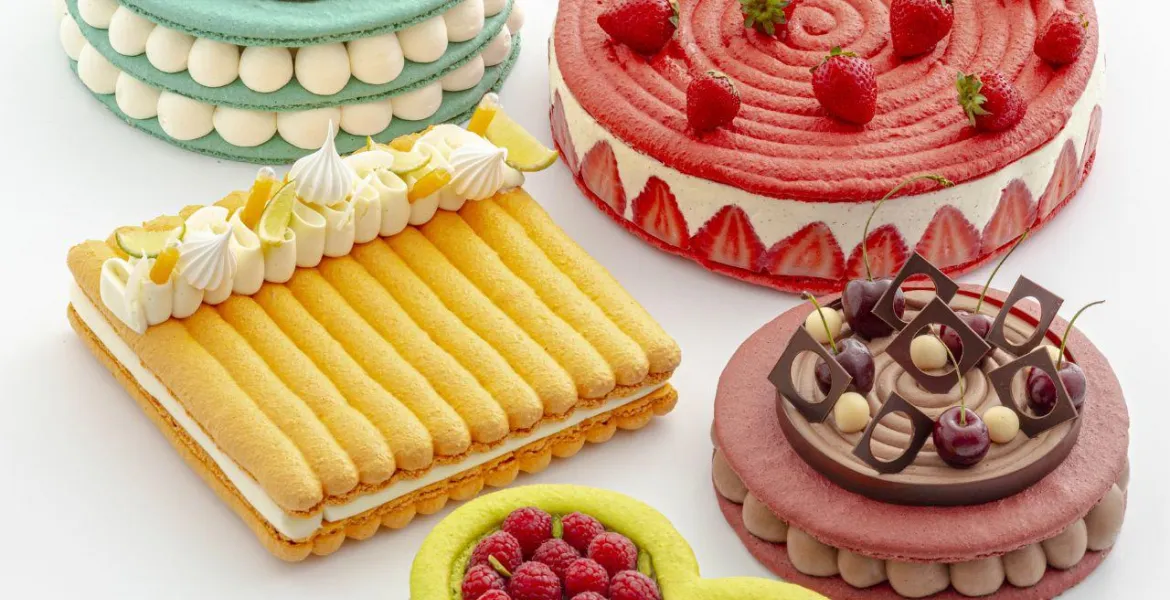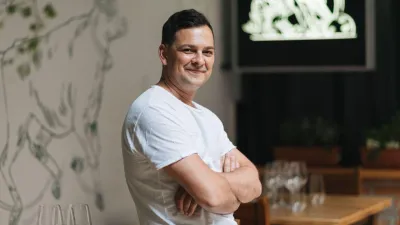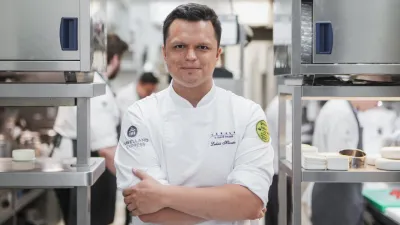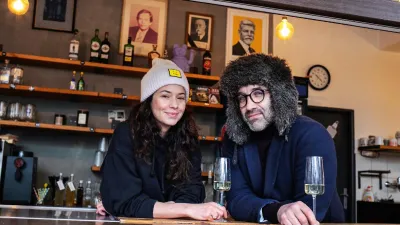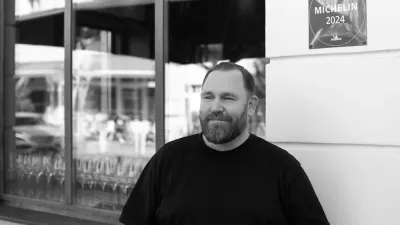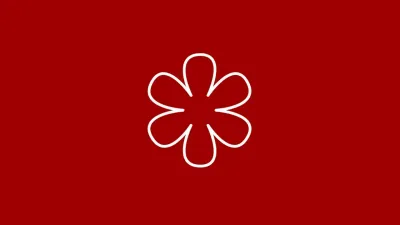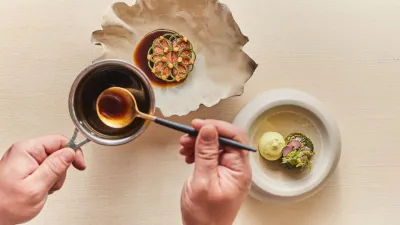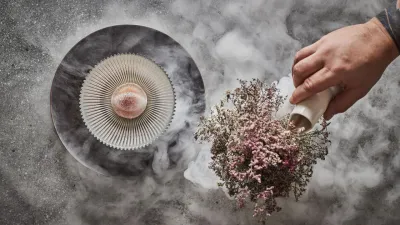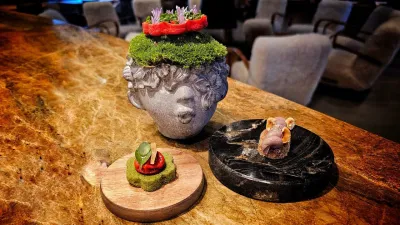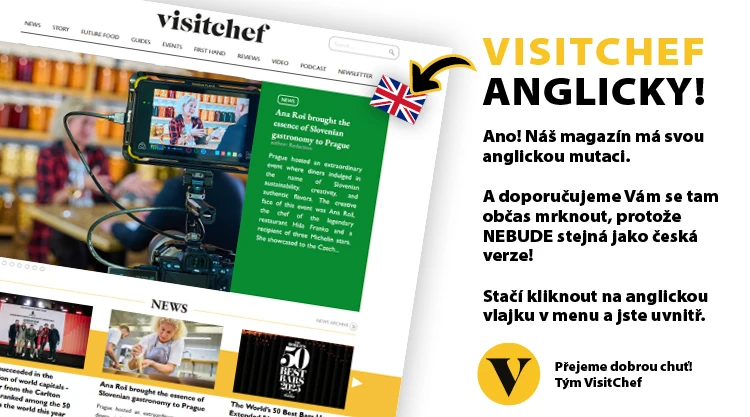"I was never satisfied with sweets until I started making them myself. But I've always liked extraordinary things," says successful pastry chef Vlad Ryasnyy, revealing the essence of his art. He is fascinated by pastry techniques, the variety of flavors, and enjoys using plant-based ingredients. Thanks to this, he managed to win silver at this year's Gastronomy Olympics in Germany, start his own company, Sugar Life, publish a cookbook, and invent the perfect recipe for vegan macarons.
"On and off, it took us three years to develop the recipe. It's not easy to turn something animal-based into a vegan product. The worst part wasn't the almond shell; it was the filling. To make it smooth, stable, and taste great, because some plant products don't react well in certain combinations or procedures, and the result is not 100%. That's why we also make classic macarons," Vlad says, adding that it's always about taste preferences. The raspberry filling, for example, is much better in vegan form, he says. The taste is more intense and fresh. "This is true of all fruit macarons. I don't really like salted caramel on a vegetable basis, for example. But some clients love it," smiles Vlad.
But it's not just the taste that has made Vlad use more plant-based products. "I'm not really a vegetarian or vegan, but some days I try to eat less meat, dairy, eggs, and so on. I feel much better. And then when I see that some people have to limit themselves like that because of various allergies, I feel sorry for them. That's why I make vegan products, so that everybody can have them," says Vlad, adding that he also avoids honey in granola for this reason.
It is important to mention, however, that the path to vegan confectionery is quite complicated for Vlad, as he does not use plant-based substitutes. "I don't really like their ingredients in particular. So we prefer to make everything ourselves. When you say vegan butter, we don't buy it as a product; we break it down into its individual ingredients and make our own. The same with white vegan chocolate, for example," says Vlad, describing its composition not from palm oil, but from cocoa butter, coconut, and sunflower or rapeseed oil.
I Have Absolute Freedom
This is also related to Vlad's fondness for confectionery processes, which he sees primarily as chemical processes. Thanks to a pastry course with Spanish pastry chef Jordi Bordas, he started to think more about how pastry really works. That it's not just about mixing butter and sugar, but that fat and liquid molecules are mixing at that moment. Which he said people underestimate the moment they mix the dough. "Brownies and batter are still just an emulsion that needs to be well mixed and combined at the right temperature. As long as I know the chemical properties of the ingredients and certain laws of physics, I'm not limited by anything and can create my own recipes. I have absolute freedom. The chemistry of confectionery makes you think," says Vlad, adding that he never looks for recipes on the internet and everything is his original creation.
What should be noted is his age. Vlad is only 25, but since he has been making confectionery since he was 12, he has spent half his life with it. He has thus had a number of successful gastronomic competitions and long-term collaborations with well-known pastry chefs, including Iveta Fabešová and the Italian Daniel Combi. This year, he is opening his first brick-and-mortar store in Brno, Sugar Life, where, as in the e-shop, he will offer products with higher quality but longer shelf life, such as jams, marmalades, nougats, or dragees, both in vegan and animal form.
Japanese Minimalism
And how did he get into confectionery as a 12-year-old? Quite unconventionally. He enjoyed the Japanese anime of Hayao Miyazaki and Studio Ghibli, such as Castle in the Sky or Princess Mononoke. "I was first attracted by the way the animation was done, the great attention to detail and minimalism. I enjoyed the way they portrayed food in anime and the unusualness of the whole Japanese culture. It was only later that I began to see the humility of tradition and human behavior."
It was Japanese wagashi desserts, which are cut into different flowers and full of tiny details, that first appealed to him. They also contain various unusual ingredients such as matcha, yuzu, or anko paste, which is made from adzuki beans. He was lucky that his dad worked as a delegate and brought the ingredients back from various trips. "My parents weren't very enthusiastic at first. I think they wanted me to go to high school instead of a hotel. But when I wanted a new food processor for my birthday instead of a phone or toys, they were fine with it."
Over the years, Vlad has moved away from Japan to French techniques, but he is not afraid of unusual ingredients even in "Czech" recipes. "I've always enjoyed flavor, exploring it, and making it complex. I guess I have some kind of deviation, but when a company comes up with a new flavor of lemonade, I just have to taste it right away. And in Paris, for example, I ordered 96 desserts in a weekend," laughs Vlad.
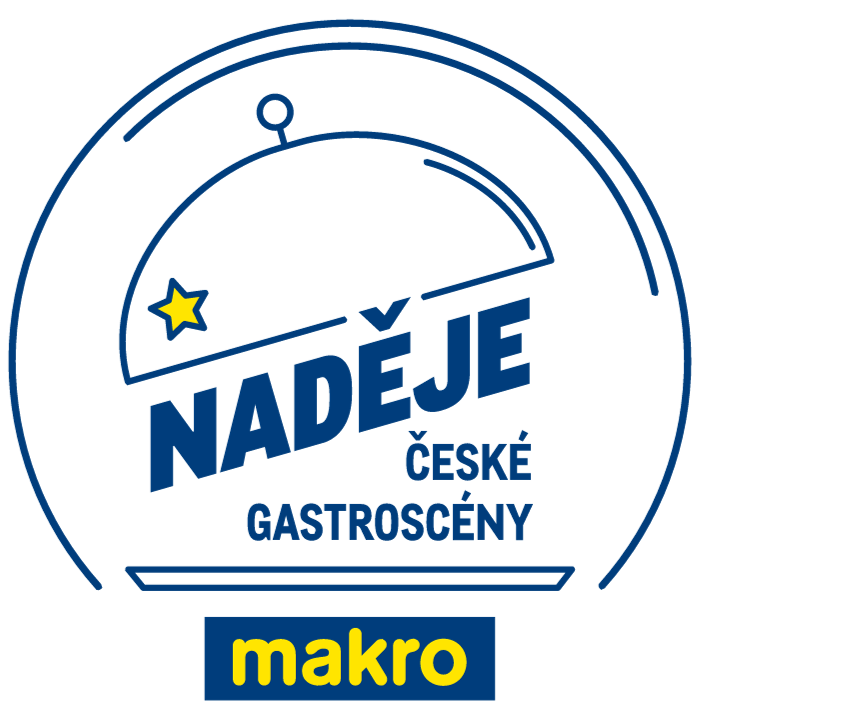
This article is part of the project Naděje české gastro scény, which supports talented professionals across Czech gastronomy in cooperation with the magazine VisitChef. During the spring months, we will introduce you to talented, creative, and original personalities from the gastro world. You will get to know chefs, pastry chefs, café owners, and baristas who are on their way to becoming the best in their field.
